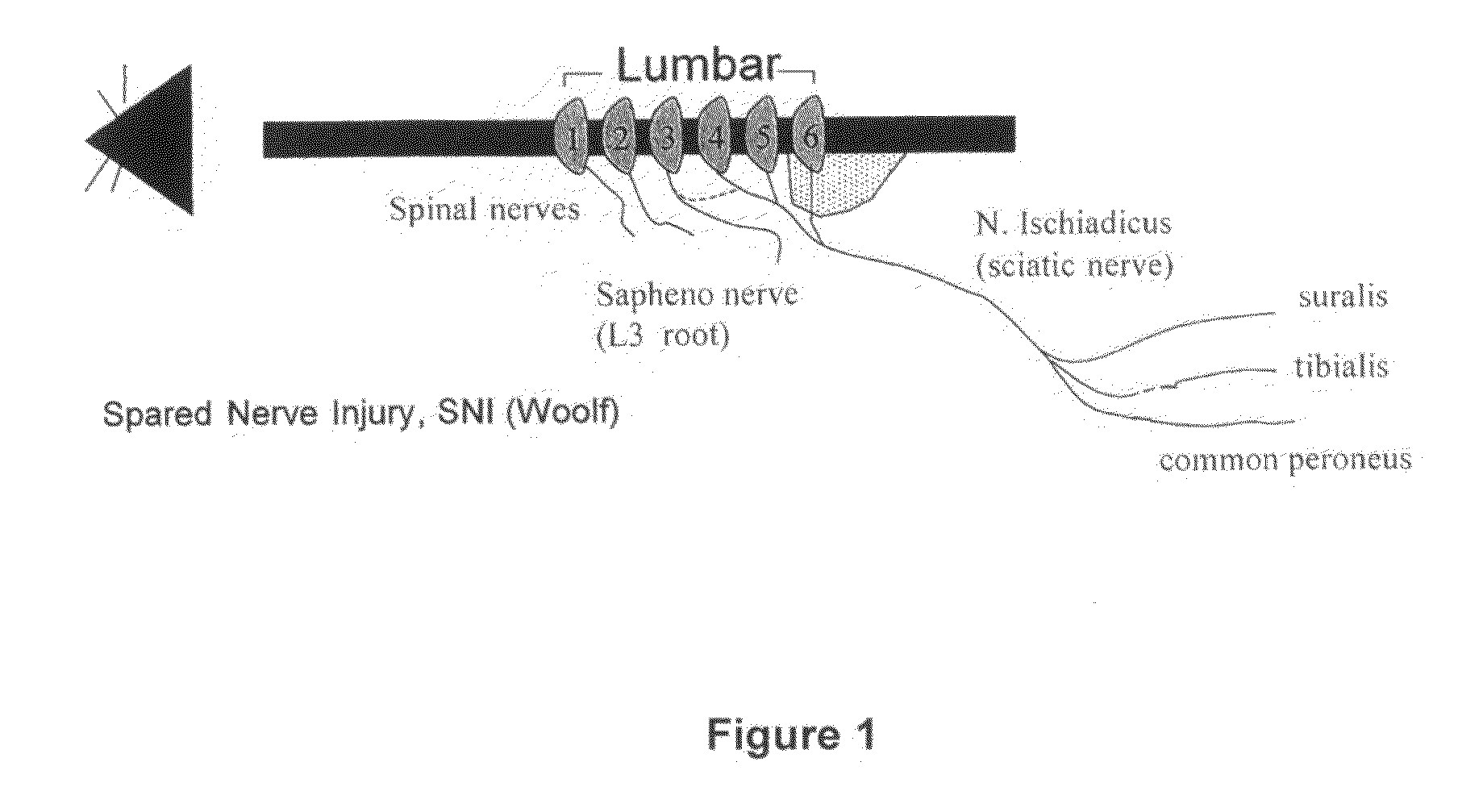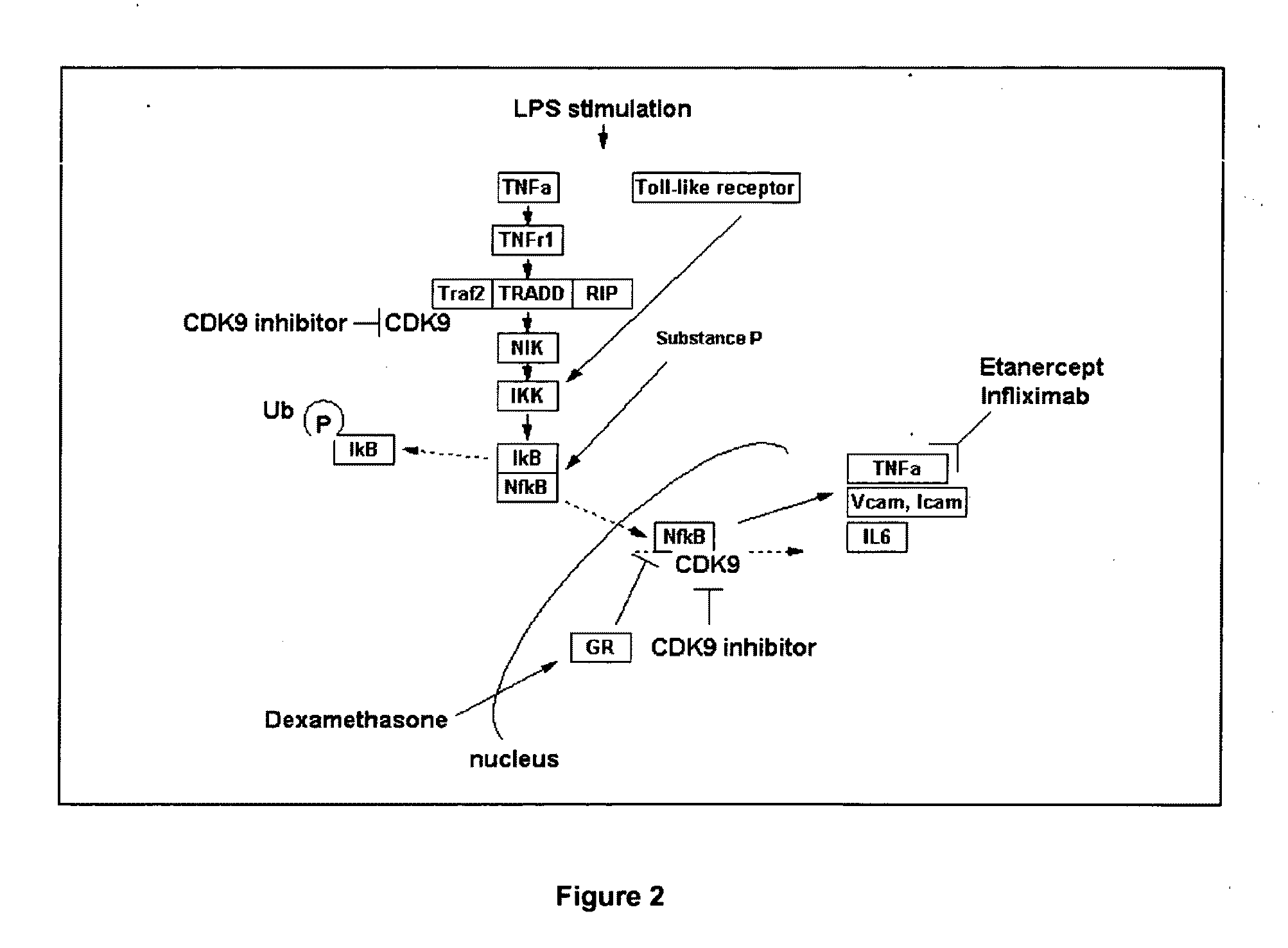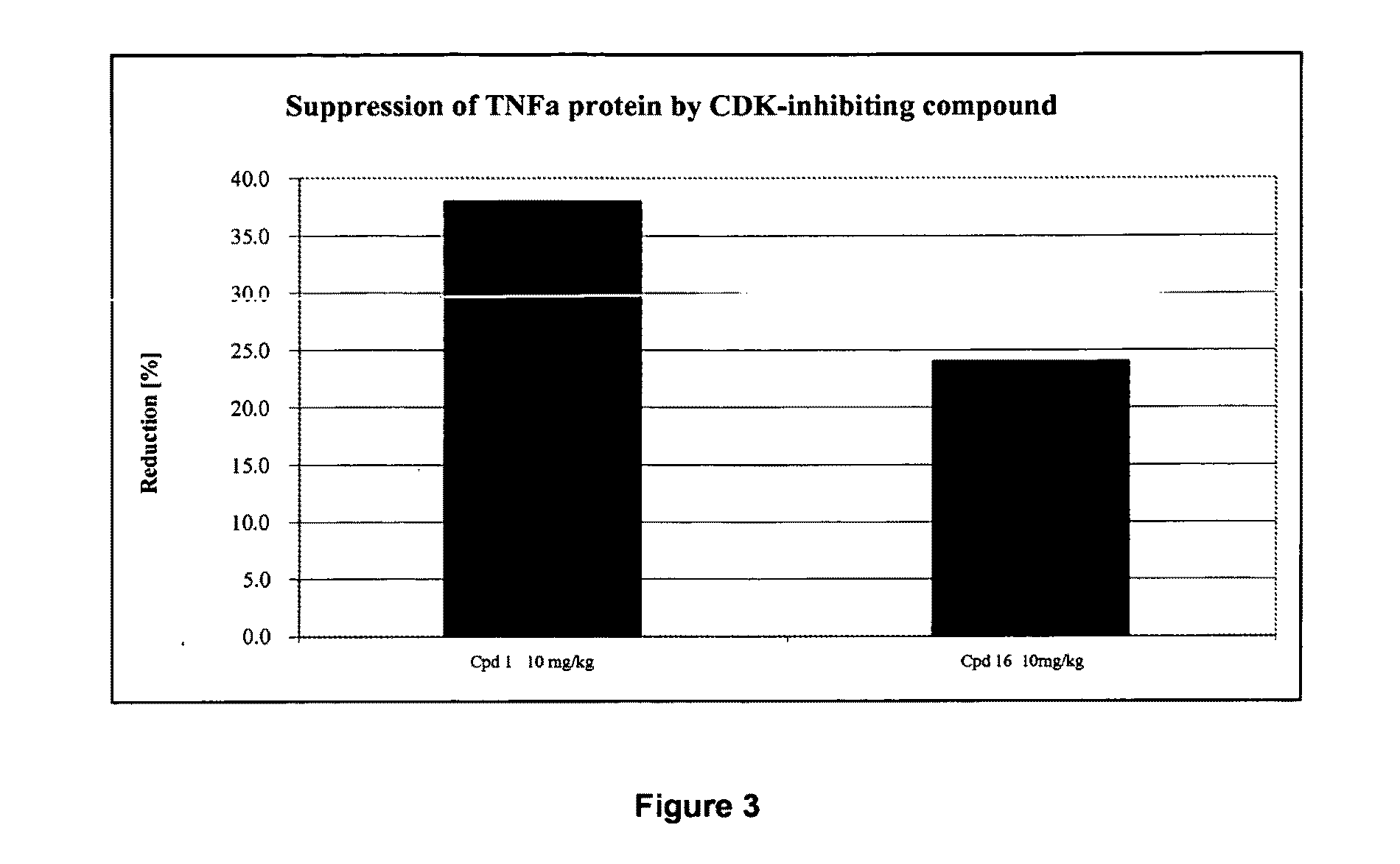Inhibitors of Protein Kinases
a cyclin-dependent kinase and protein kinase technology, applied in the direction of biocide, drug composition, immunological disorders, etc., can solve the problems of not being able to inhibit rna polymerase-regulating cdks, debilitating or dangerous side effects, and not being able to achieve complete relief in most cases
- Summary
- Abstract
- Description
- Claims
- Application Information
AI Technical Summary
Benefits of technology
Problems solved by technology
Method used
Image
Examples
example 1
(3R)-N-(6-(2-methoxyphenyl)pyrimidin-4-yl)-N-methylpiperidine-3-carboxamide
Preparation of the precursor (R)-benzyl 3-(6-(2-methoxyphenyl)pyrimidin-4-ylcarbamoyl)piperidine-1-carboxylate
[0448]To a solution of 6-(2-methoxyphenyl)pyrimidin-4-amine (5.80 g, 28.8 mmol) in 60 ml of DCM was added 4-dimethylaminopyridine (4.16 g, 34.0 mmol) followed by N-Cbz nipecotinic acid chloride (8.00 g, 28.4 mmol) [prepared from N-Cbz nipecotinic acid and oxalyl chloride] dropwise at room temperature. The reaction mixture stirred for 2 h and washed with water. The organic layer was separated, dried (Na2SO4) and concentrated. The obtained crude residue was passed through pad of silica gel eluting with 25% ethyl acetate in hexane to provide (R)-benzyl 3-(6-(2-methoxyphenyl)pyrimidin-4-yl-carbamoyl)piperidine-1-carboxylate (8.5 g, yield: 67%).
[0449]1H-NMR: (CDCl3) δ=8.95 (1H, s), 8.78 (1H, s), 8.20 (1H, bs), 7.91 (1H, dd), 7.45-7.35 (5H, m), 7.16-7.00 (2H, m), 5.20 (2H, s), 4.40-4.26 (1H, m), 4.18-4.02 (...
preparation of example 1
[0450]To a solution of (R)-benzyl 3-(6-(2-methoxyphenyl)pyrimidin-4-yl-carbamoyl)piperidine-1-carboxylate (7.0 g) in 50 ml of methanol was added 10% palladium hydroxide (1.5 g) under an atmosphere of nitrogen and the mixture was stirred at room temperature under an atmosphere of hydrogen for 8 h. The reaction mixture was filtered through celite and the solvent was evaporated. The obtained mixture was taken in diethyl ether, stirred, filtered, washed with diethyl ether and dried under vacuum to obtain Example 1 as a white solid (3.5 g, yield: 72%).
[0451]1H-NMR: (DMSO-d6) δ=11.10 (1H, s), 8.95 (1H, s), 8.67 (1H, s), 7.84 (1H, d, J=10 Hz), 7.48 (1H, dd), 7.20-7.04 (2H, m), 3.98 (3H, s), 3.06-2.56 (5H, m), 1.96-1.32 (4H, m); MS (m / z)=312.9 (M+H); mp: 210-213° C.; Analytical purity: 95.5%; Chiral purity [R=91.62% and S=8.37%].
example 2
N-(6-(5-fluoro-2-methoxyphenyl)pyrimidin-4-yl)piperidine-3-carboxamide*TFA
Preparation of the precursor 3-[6-(5-fluoro-2-methoxy-phenyl)-pyrimidin-4-ylcarbamoyl]-piperidine-1-carboxylic acid benzyl ester
[0452]To a solution of 5-fluoro-2-methoxyphenyl boronic acid (0.20 g, 1.1 mmol) in a mixture of THF and water (6 ml, 1:1), benzyl 3-(6-chloropyrimidin-4-ylcarbamoyl)piperidine-1-carboxylate (0.35 g, 1.0 mmol) was added at 0° C. followed by palladium acetate (12 mg, 0.054 mmol), PPh3 (31 mg, 0.12 mmol) and saturated solution of sodium carbonate (2 ml). The reaction mixture was stirred at room temperature for 30 h and then filtered through a celite bed which was washed with ethyl acetate. The aqueous layer was extracted with ethyl acetate, the organic layers were combined, washed with brine, dried and evaporated under reduced pressure. The crude product was purified by column chromatography, using hexane / ethyl acetate (4:1) as eluent, to provide 0.31 g (yield: 53.8%) of 3-[6-(5-fluoro-2...
PUM
| Property | Measurement | Unit |
|---|---|---|
| of time | aaaaa | aaaaa |
| Ra | aaaaa | aaaaa |
| time | aaaaa | aaaaa |
Abstract
Description
Claims
Application Information
 Login to View More
Login to View More - R&D
- Intellectual Property
- Life Sciences
- Materials
- Tech Scout
- Unparalleled Data Quality
- Higher Quality Content
- 60% Fewer Hallucinations
Browse by: Latest US Patents, China's latest patents, Technical Efficacy Thesaurus, Application Domain, Technology Topic, Popular Technical Reports.
© 2025 PatSnap. All rights reserved.Legal|Privacy policy|Modern Slavery Act Transparency Statement|Sitemap|About US| Contact US: help@patsnap.com



